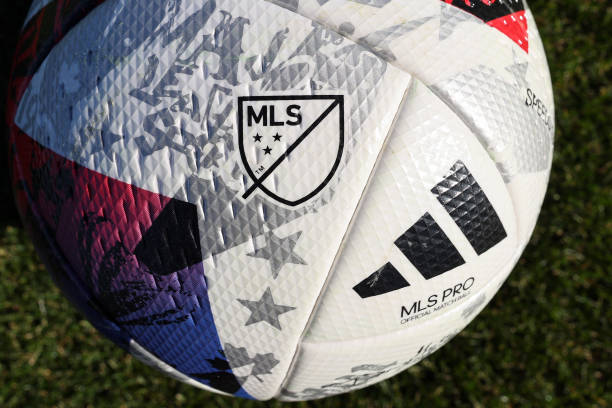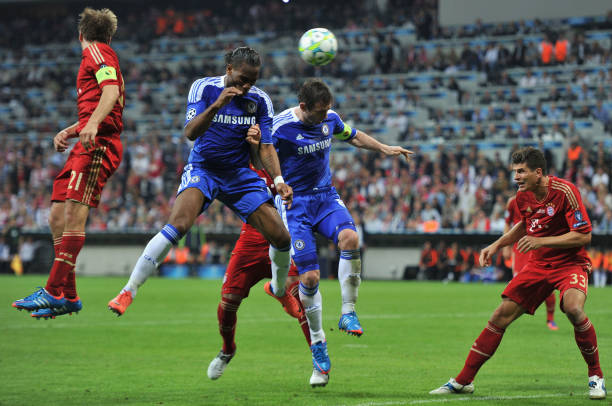Unlike in other parts of the world (especially in Europe), the Major League Soccer (MLS) — like all other major sporting leagues in North America — has no relegation and promotion system, with the League operating under a closed shop format.
The National Football League (NFL), National Basketball Association (NBA), and Major League Baseball (MLB) all operate the same way, with the lack of risk involved attractive to owners when the time comes to invest hundreds of millions of dollars.
The MLS is the highest level of club soccer in the United States. The League comprises 29 teams: 26 in the USA and 3 in Canada.
Background to the MLS’ foundation and expansion
Established in 1996, MLS experienced financial and operational struggles in its first few years, losing millions of dollars and folding two teams in 2002.
Since then, developments such as the proliferation of soccer-specific stadiums around the League, implementation of the Designated Player Rule allowing teams to sign megastar players such as David Beckham, and national TV contracts have made MLS profitable.
With an average attendance of over 20,000 per game, MLS has the 4th-highest average attendance of any major professional sports leagues in the United States and Canada after the National Football League (NFL), Major League Baseball (MLB), and Canadian Football League (CFL).
Furthermore, it became the 7th-highest attended professional soccer league worldwide in the year 2013.
Format
The MLS regular season typically starts in late February or early March and runs through mid-October, with each team playing 34 games; the team with the best record is awarded the Supporters’ Shield.
Eighteen (18) teams compete in the post-season MLS Cup Playoffs in late October and November, culminating in the League’s championship deciding game, known as the MLS Cup.
Why there is no promotion and relegation in the MLS
Major League Soccer (MLS) stands out with its distinctive single-entity structure, which sets it apart from the traditional promotion and relegation system found in other leagues.
Currently, the United States has three major professional soccer leagues: MLS, NASL, and USL PRO.
While these leagues are not directly connected, they are classified into different divisions. MLS holds the status of the first division, while NASL and USL PRO are considered second divisions by the soccer governing body.
American soccer does not have promotion and relegation, making Major League Soccer one of the only first-division professional soccer leagues in the world where clubs don’t have to fear dropping into the lower divisions.
The absence of a relegation system in the MLS is majorly due to its distinctive organizational structure and rich history.
The lack of relegation was viewed as a means to offer stability and draw in investment when MLS was founded as part of a coordinated attempt to grow professional soccer in the nation.
The current franchise-based concept has a closed league structure with the goal of ensuring the long-term stability of clubs, with owners acquiring teams through large financial expenditures.
This structure provides financial certainty and stability to both club owners and investors by enabling clubs to plan and develop their organizations without the continual worry of relegation.
The League is a single entity
Instead of operating as an association of independently owned clubs, MLS is a single entity in which each team is owned by the League and individually operated by the League’s investors.
The League has a fixed membership like most sports leagues in the United States and Canada.
Secure investment
Owners technically buy a stake in the League and are then given rights to individually operate a particular club. Therefore, team owners are actually partners in the League together rather than competitors.
Since the clubs are owned by MLS, the revenue belongs to the League and not the individual clubs. Teams do get a percentage of their generated revenue, but the lion’s share goes into the combined league account.
From there, the money is distributed out to the clubs to cover their expenses, including paying for most of the player salaries (minus the amount of Designated Player Salaries above the salary cap). League profits are redistributed to the owners, who have the option of reinvesting into their respective clubs.
Owners of MLS stock are, therefore, essential partners in a private company. The bottom line is that they win together and lose together. MLS clubs share revenue, which encourages them to control costs and safeguard investments as part of a single-entity ownership system.
MLS club owners have hundreds of millions of dollars at stake in their respective teams. In addition, owners view their clubs as potential high-growth investments. Whereas most North American professional leagues are at the top of their sport, MLS is still growing and expanding as a relatively new league. Coupled with the fact that it could become a top league in the future, the potential upside is huge.
With promotion and relegation in place, all of that could come tumbling down. Any MLS team, upon being relegated to a lower division, would immediately face a quick drop in their overall valuation. Only few, if any, team owner would be willing to take such a hazard risk to their investment.
Relegation could have a serious financial impact on teams that are already struggling to stay afloat.
Additionally, teams that are relegated may find it difficult to attract sponsors, as their brand gets weaker when they are playing in a lower division.
In essence, owners of teams in the MLS are protected by the League’s closed nature, its fixed membership, and the fact that it uses no promotion and relegation.
American sporting culture
American sports of all varieties have forsaken promotion and relegation in favor of a more stable playoff and draft pick system. In this model, the team’s financial stakes are protected. There is always a chance for redemption after a poor season. MLS is no different, as teams that perform below par in a season have the opportunity to select stronger draft picks the following season.
Culturally, for Americans, this is how most of their sporting system operates. There is no context for promotion and relegation in other major North American sports.
The NBA, NFL, MLB, and NHL are considered the top level in their respective sports. And none of them have promotion and relegation.
Lack/weak lower divisions
Additionally, unlike Europe, North America doesn’t have enough sets of lower divisions that teams can be relegated to. This means that teams that are relegated would struggle to find a new league to play in, which could be difficult since the competition in lower leagues is generally not as strong.
New owners have to spend huge money to join the League
Furthermore, the cost of establishing a professional soccer team in the United States keeps increasing with time. For instance, Toronto FC paid $10 million to join the League in 2007, while NYCFC paid $100 to enter the League in 2015. Meanwhile, Charlotte FC spent $350 million to join the League in 2022, which shows the growth and value of the League as an investment.
With the cost of establishing a new soccer team being so high, the chance that the team could move to a lower league is not a wise financial decision for owners.
Lesson from previous experience
The predecessor of the MLS, NASL (North American Soccer League), existed from 1968 to 1984. It collapsed due to financial issues from expanding too fast, economic issues, poor TV deals, and players’ salaries growing too large for the League to keep up with.
The MLS, still developing, is trying to avoid the fate of its predecessor and currently sees the lack of relegation and promotion as one of the best and most efficient ways to do so.
Introducing a new system can also disrupt the growth of soccer in the region, with the round-leather game rapidly gaining interest more and more interest among Americans. It needs to sustain the current momentum to compete with other major sports in the region going forward.
In conclusion, cultural and financial factors pose challenges to a promotion and relegation system being adopted by the MLS, and the lower division clubs also lack the infrastructure to compete at the higher levels.

YOU SHOULD ALSO READ:
- MLS MVPs: Top 25 Best MLS Players (2023)
- Top 10 Best Football Clubs in the MLS
- MLS vs. USL: What Are The Similarities And Differences?
- What is the Average MLS Salary?
- Top 5 Greatest MLS Players of All-time







